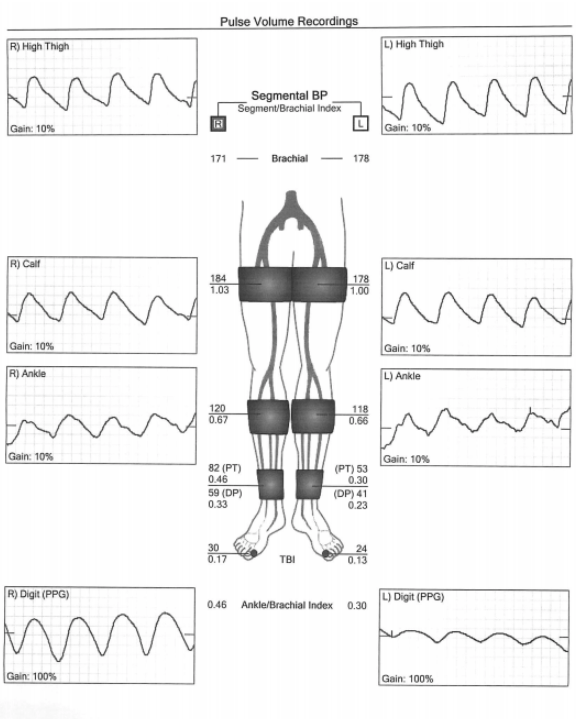Peripheral arterial disease (PAD) is a disease in which plaque builds up in the arteries that carry blood to your head, organs, and limbs.
Symptoms may include:
- Intermittent claudication (muscle pain, aching, or fatigue with walking)
- Rest pain
- Ulcers on feet/toes
- Weak pulses
Risk Factors may include:
- Hypertension (high blood pressure)
- High Cholesterol
- Diabetes
- Smoking
- Family History

Evaluation of the arterial supply to the limbs is done by placing blood pressure cuffs at different levels in the legs (Lower) or arms (Upper) and measuring blood pressures and pulse volume recordings. Arterial pressures in the lower extremities are compared to the pressures measured in the arms.
In some cases, additional evaluations may include treadmill exercise testing.

A lower extremity arterial physiologic study may be requested to determine whether peripheral artery disease is present, what vessels are affected, and how severely the blood flow is impaired. A study may be ordered prior to an initial consultation with a vascular specialist for patients referred for evaluation of PAD.

